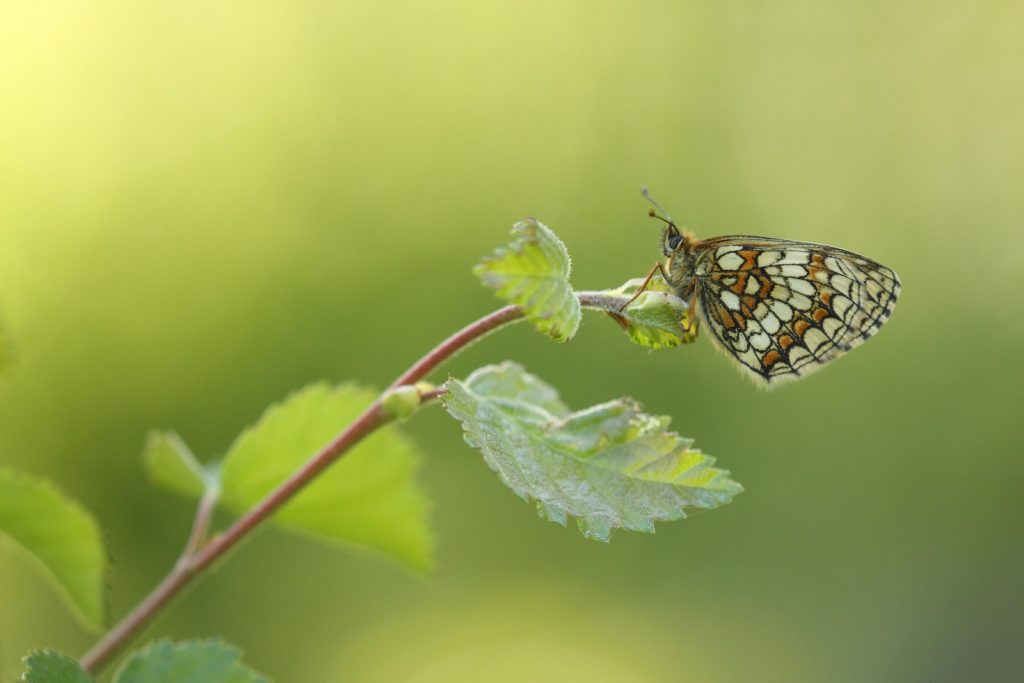UK butterflies suffered their fourth worst year on record in 2016 with the majority of species experiencing a decline in numbers, a study has revealed.
A mild winter followed by a cold spring contributed to conditions that saw both rare and widespread species struggle despite many parts of the UK enjoying a warm and dry summer.
Some 40 of the 57 species studied recorded a decline compared with 2015, the annual UK Butterfly Monitoring Scheme (UKBMS) led by Butterfly Conservation, the Centre for Ecology & Hydrology (CEH), British Trust for Ornithology (BTO) and Joint Nature Conservation Committee (JNCC) revealed.
The highly threatened Heath Fritillary had its worst year on record for the second year running, while the Grizzled Skipper, Wall, Grayling, White-letter Hairstreak and White Admiral all recorded their worst ever years.
The Heath Fritillary, restricted to just a handful of sites in southern England, saw numbers slump by 27% compared to 2015. This ongoing decline raises fears for the long-term future of the butterfly whose numbers have fallen by 82% in the last decade.
The rare Grizzled Skipper, found in southern England and parts of Wales, saw numbers tumble by 24%. The butterfly is a spring-flying species emerging from April, a month that was around a degree colder than the long-term average in 2016.
The Grizzled Skipper’s struggles mirrored a bad year overall for the skippers with all but one of the UK’s eight species suffering a fall in numbers compared to 2015.
The White Admiral, White-letter Hairstreak and Grayling slumped by 59%, 42% and 27% respectively while more widespread species also struggled with the Wall down 31%, the Gatekeeper down 48% and Meadow Brown falling by 31% compared with 2015.
Research suggests that the UK’s increasingly mild winters are having a negative effect on butterflies as they may lead to increased disease, predation or disruption of overwintering behaviour.
Cold springs can also cause problems for butterflies by reducing or delaying emergence leading to shortened lifespans.
Some species bucked the trend to record reasonable years. The previously extinct Large Blue, one of the UK’s rarest butterflies, recorded its second best year on record with numbers up 38% on 2015.
The butterfly has responded to conservation work to improve the specific grassland habitat that it relies upon to thrive and has showed a significantly increasing population trend since its reintroduction in 1983.
The widespread and migratory Red Admiral recorded a rise of 86% compared to 2015 and the Clouded Yellow, another mainly migrant species, saw its numbers rise by 35%.
Professor Tom Brereton, Head of Monitoring at Butterfly Conservation, said: “Worryingly, not even the pleasant summer weather of 2016 was enough to help butterflies bounce back from a run of poor years.
“The results show that butterflies are failing to cope with our changing climate and how we manage the environment. As butterflies are regarded as good indicators of environmental health this is hugely concerning for both wildlife and people.”
Dr Marc Botham, Butterfly Ecologist at the Centre for Ecology & Hydrology, said: “The weather at critical times of species development can cause dramatic changes in population numbers in the short term. What is of greatest concern is the regularity with which these short-term changes in recent years are negative, resulting in significant long-term declines for many species.”
“Furthermore, this is becoming more and more commonplace for many of our most widespread and abundant species equating to large reductions in overall butterfly numbers with knock-on effects to their ecosystems.”
Sarah Harris, Breeding Bird Survey (BBS) National organiser at the British Trust for Ornithology, said: “Our understanding of just how our butterflies are doing would be much poorer without the huge amount of effort our volunteers put in.
“The data they collect allow us, working alongside our partners, to monitor the UK’s butterflies in the detailed and long-term way we do, and bring attention to those species in trouble and those enjoying conservation success, as seen in the Large Blue. Thanks must go to all who contributed.”
Anna Robinson, Monitoring Ecologist at the JNCC said: “We are really grateful to the thousands of volunteers who get involved in monitoring the UK’s butterflies.
“The evidence provided by the UKBMS is of great importance in showing the need for conservation action to improve the situation.”
The UKBMS has run since 1976 and involves thousands of volunteers collecting data through the summer. Last year a record 2,507 sites were monitored across the UK.
The scheme is organised and funded by Butterfly Conservation, the Centre for Ecology & Hydrology, the British Trust for Ornithology and the Joint Nature Conservation Committee.





